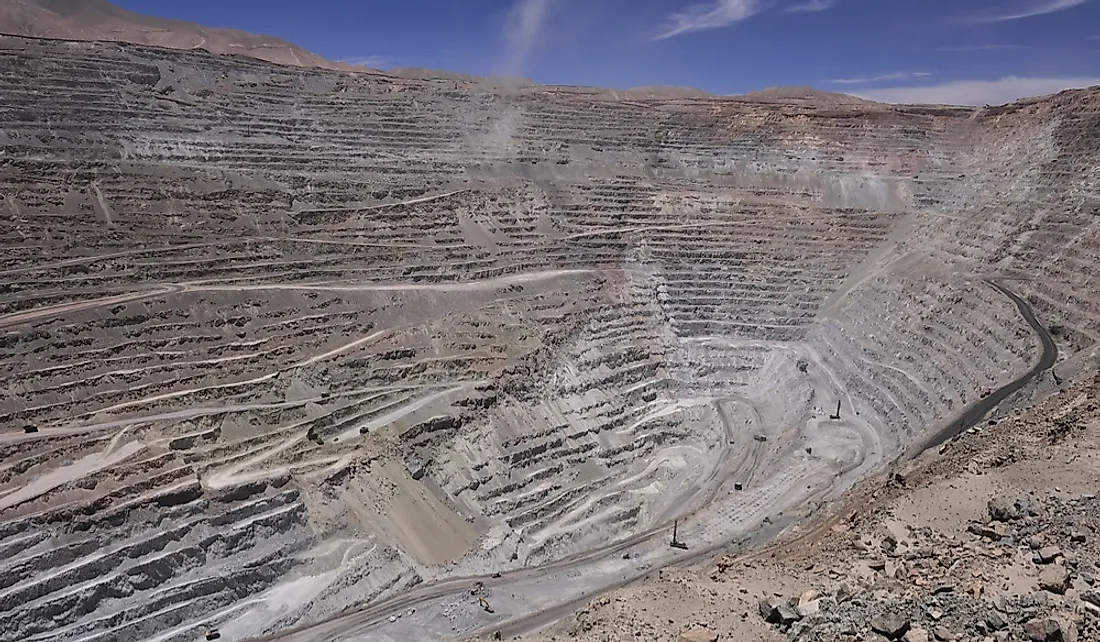What Is Chuquicamata In Chile Famous For?

The Chuquicamata smelting and mining center is located in the northern region of Chile near Calama which is located at the elevation of 9,350 feet above sea level. The copper-rich center is also located in the Atacama Desert which is known to contain reserves of other minerals like gold and other industrial metals. The word Chuquicamata is derived from the Aymara language and refers to the Chuqui or Chuco Native American group. The group mined at the site before the arrival of the Spanish to make their tools and weapons. The center is world renown as one of the largest open-pit mines. The mine provides an estimated 25% of the nation’s total copper output. Copper mined at the site is transported to Antofagasta some 140 miles away via rail.
History of the Mine
Incas and the Spanish explorers first exploited the outcropping of high-grade copper oxide. Between 1879 and 1912, English and Chilean companies exploited the rich veins of brochantite overlying the chalcocite and enargite with pyrite and quartz. Mining operation on a large scale level began in 1915. Underground extraction followed the extensions of the Panizo fissure which is currently identified as the middle to upper benches of the northeastern part of the mine. The mine was producing an estimated 10,000 tons of 1.89% copper per day in 1915 of what was at the time assumed to be deposit with 96 million tons of 2.41% copper. In 1916, the estimate of proven and probable reserves rose to 771.62 million tons of 2.12% copper.
Acquisition by Anaconda Copper Mining Company
The Chile Exploration Co which had been operating the mine sold it to Anaconda Copper Mining Co in 1923. The new owner of the mine increased production and in 1950 shifted from the extraction of mainly Oxides to include also sulfide ores. The company also installed concentrator, smelter, and refinery facilities. Further expansion of the center was carried out in 1968 which increased the annual copper production to 500,000 tons making it the largest copper producer in the world. Anaconda Copper Mining Co operated the mine for a total of 48 years during which the mine grew significantly in depth.
Nationalization of the Mine
In 1971, the mine was nationalized by the government of Argentina. Upon nationalization, major excavation was carried out to increase production, and it also enhanced knowledge of the deposit past the pre-mine surface to a depth of 0.6 miles. Further exploration of the Pampa Norte deposit was also carried out.
The Future of the Chuquicamata Mine
The Chuquicamata copper mine is currently 2.67 miles long and 0.528 miles deep. In September 2018, the last blast was conducted at the bottom of the pit marking 103 years of operations at the site. Feasibility studies have previously been conducted to switch to underground production. The ore under the pit is estimated to hold 1.87 billion tons of 0.7% copper grading. Development of the underground project is expected to cost more $4 billion. The switch to underground mining is expected to extend the mine’s life by at least an additional 50 years.











